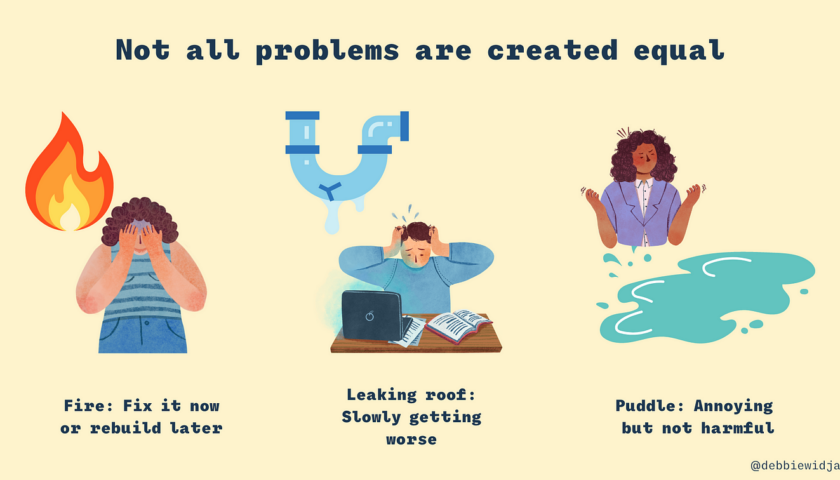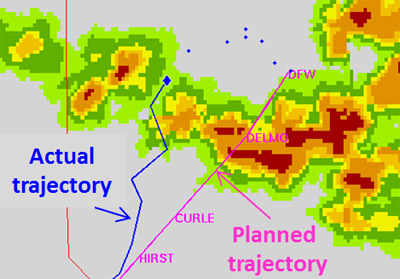Recently, my pilot friend met with a road accident while commuting to airport. Luckily for him it was very minor incident and my friend did not sustain any injury. Immediate emotional feelings ranged from helplessness for getting late to being isolated and dazed or overwhelmed. After initial confusion, his training helped him to collect his thoughts and he continued for flight duty. However after operating two sectors, he found himself unable to cope up with routine tasks. He analysed the situation correctly and reported fatigue. He made the right decision and contributed to safety.
Through this post I wish to highlight not only the importance of mental health as well as stark difference between PTSD and Emotional Distress. Distress could be caused by anything non-normal either at work or home. Emotional distress conditions require immediate attention of flight crew, operators and regulators for the simple reason that these situations are more common and their effects are equally overwhelming though for short period of time.
Post traumatic Stress Disorder
American Psychiatric Association defines Post traumatic stress disorder (PTSD) as a psychiatric disorder that may occur in people who have experienced or witnessed a traumatic event, series of events or set of circumstances. An individual may experience this as emotionally or physically harmful or life-threatening and may affect mental, physical, social, and/or spiritual well-being. Examples include natural disasters, serious accidents, terrorist acts, war/combat, rape/sexual assault, historical trauma, intimate partner violence and bullying,
People with PTSD have intense, disturbing thoughts and feelings related to their experience that last long after the traumatic event has ended. They may relive the event through flashbacks or nightmares; they may feel sadness, fear or anger; and they may feel detached or estranged from other people. People with PTSD may avoid situations or people that remind them of the traumatic event, and they may have strong negative reactions to something as ordinary as a loud noise or an accidental touch.
For a person to be diagnosed with PTSD, however, symptoms must last for more than a month and must cause significant distress or problems in the individual’s daily functioning. Many individuals develop symptoms within three months of the trauma, but symptoms may appear later and often persist for months and sometimes years. PTSD often occurs with other related conditions, such as depression, substance use, memory problems and other physical and mental health problems.
Examples of Traumatic events in aviation include:
- aircraft accident;
- involvement in disasters/major incidents;
- hijack;
- colleague seriously injured/dead;
- terrorism;
- use of firearms;
- children injured or dead;
- situations of extreme strain, eg of long duration, high intensity and/or involving extreme sensory input;
- turbulence which threatens continued flight.
For most professional flight crew and Air Traffic Control officers, such events are uncommon but when they do occur it is important appropriate action is taken to ensure flight safety is not compromised and for the benefit of the individual(s) involved. It is recommended that any individual exposed to a critical incident should be withdrawn from duty immediately. This will ensure that the following can take place:
- rest from immediate operational pressures;
- availability for a medical examination, which should be carried out at the first available opportunity, and which may indicate the need for a psychological assessment;
This should reduce the likelihood of the individual developing PTSD.
Above are extreme cases of accidents. There are other non life threatening situations in aviations which may lead to incidents. The main difference between accident and incident is degree of damage caused. Accidents and incidents may induce a different kind or levels of emotions in the flight crew. Researchers have well documented negative impacts of aviation accidents on flight crew physical and mental health. Some researchers have highlighted effects on non-involved flight crew physical and psychological state also. It is clear that aviation accidents and incidents inevitably affects flight crews’ emotional state (PTSD, depression, anxiety fear, distress and other negative emotions).
Emotional Distress
Rigorous screening, training and experience help flight crew stabilise their emotions better than ordinary people. However, each accident or incident induces different kind of emotions in flight crew. Emotional health of flight crew directly or indirectly affects their immediate cognitive abilities, situational awareness, information processing, reaction time and finally the decision making. While PTSD is extreme mental health condition which develops in response to experiencing or witnessing a distressing event involving the threat or extreme bodily harm. However, incidents may cause emotional distress, anxiety, fear which flight crew can experience anytime and is sometime temporary in nature.
Some symptoms of emotional distress include:
- feeling overwhelmed, helpless, or hopeless
- feeling guilty without a clear cause
- spending a lot of time worrying
- having difficulty thinking or remembering
- sleeping too much or too little
- having changes in appetite
- relying more heavily on mood-altering substances, such as alcohol
- isolating from people or activities
- experiencing unusual anger or irritability
- experiencing fatigue
- having difficulty keeping up with daily tasks
- experiencing new, unexplained pain
Reasons for emotional distress can vary widely and generally involve multiple factors.
Emotional distress at work
The workplace in aviation is a stressful environment, and while some stress may be motivating, too much is often overwhelming. Some causes of emotional distress related to work may include:
- concerns about job security
- concerns about performance
- long work hours
- low pay
- poor working conditions (noisy conditions, extreme temperature)
- increasing responsibility
- a lack of control over work
- relationships with colleagues or managers
Emotional distress at home
Among the many possible causes of emotional distress at home are personal or environmental factors, such as:
- experiencing relationship problems with partners, other family members, or friends
- undergoing major life changes, such as moving home or having a child
- living in a neighborhood that faces inequity and a deprivation of resources
- having a low income
- experiencing discrimination
- feeling lonely or isolated
- having debt
- having an unhealthful lifestyle, which might involve smoking or low levels of exercise
All of us would have experienced some of these events in our life and would have developed techniques to deal with them. We might have been successful in dealing with them but that may not be true for everyone or in every situation. I also experienced one such event when I had to reject take off due to incorrect configuration and it was the first sector of the day. A mistake was made and subsequently addressed by correctly rejecting the takeoff. I was aware of heightened level of anxiety along with increased heart beat and excessive sweating for next 15-20 min. Subsequently as the day progressed, my mind continued to go over the entire events time and again. My thoughts ranged from loosing job due poor performance to experiencing discrimination due to silly mistake or to feeling lonely and isolated. An emotional distress could be triggered by simple mistakes like speed burst to silly argument over Radio to lack of last minute concentration leading to un-stabilized approach or hard landing. Other extraneous factor like MEL, noisy environment or hot working conditions could also lead to distress at work. Oh, my bad, I forgot to mention biggest emergency in pilots life – A Go Around.
While in Air Force around the world, pilots are not permitted to fly when shifting home or travelling for long leave. The military bosses understand the effects of distress very well.
There is very fine line between stress and distress.
To sum up, emotional distress can become overwhelming and affect daily functioning. Many people experience emotional distress. It may resolve on its own or when a stressful situation concludes. In other cases, the symptoms improve slowly as people adapt or find stress management techniques that work for them. The treatment usually involves identifying the triggers and practicing techniques to reduce stress. There is no clinical diagnosis of emotional distress. If emotional distress is unmanageable or not improving, it is advisable to contact a doctor or mental health professional. Doing this is particularly important if there are other signs of a mental health disorder, such as depression or anxiety.
Be safe. Fly safe.



